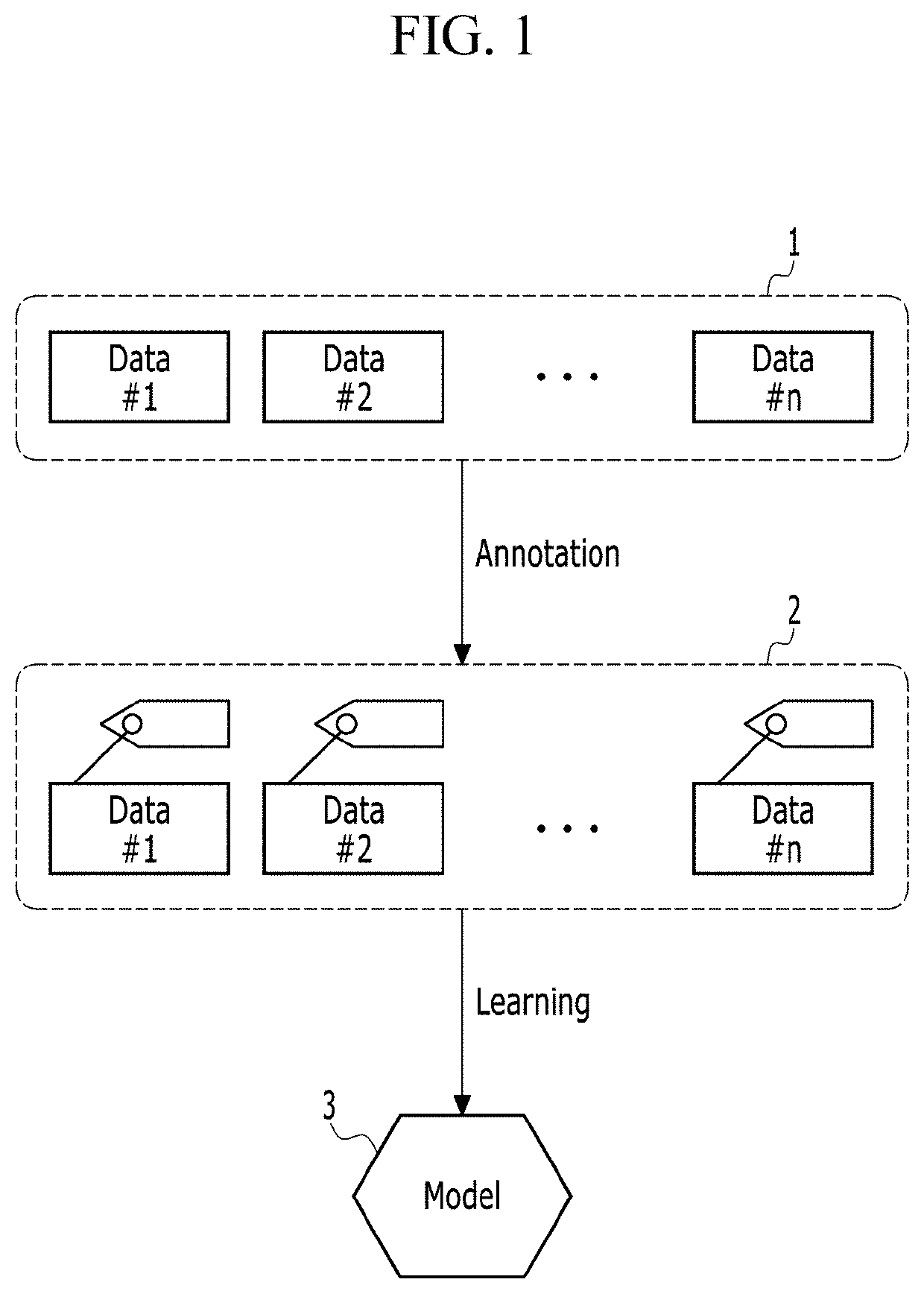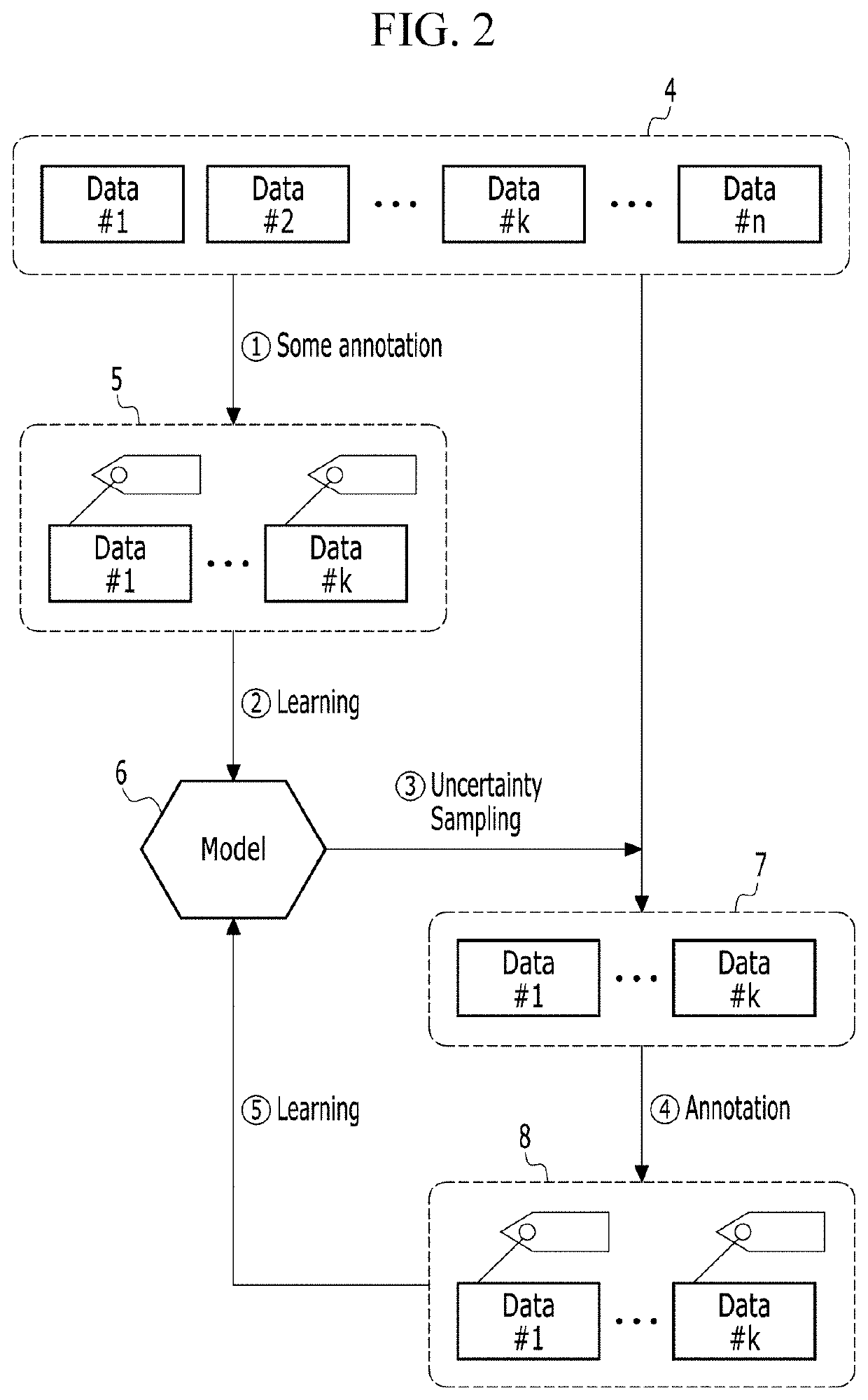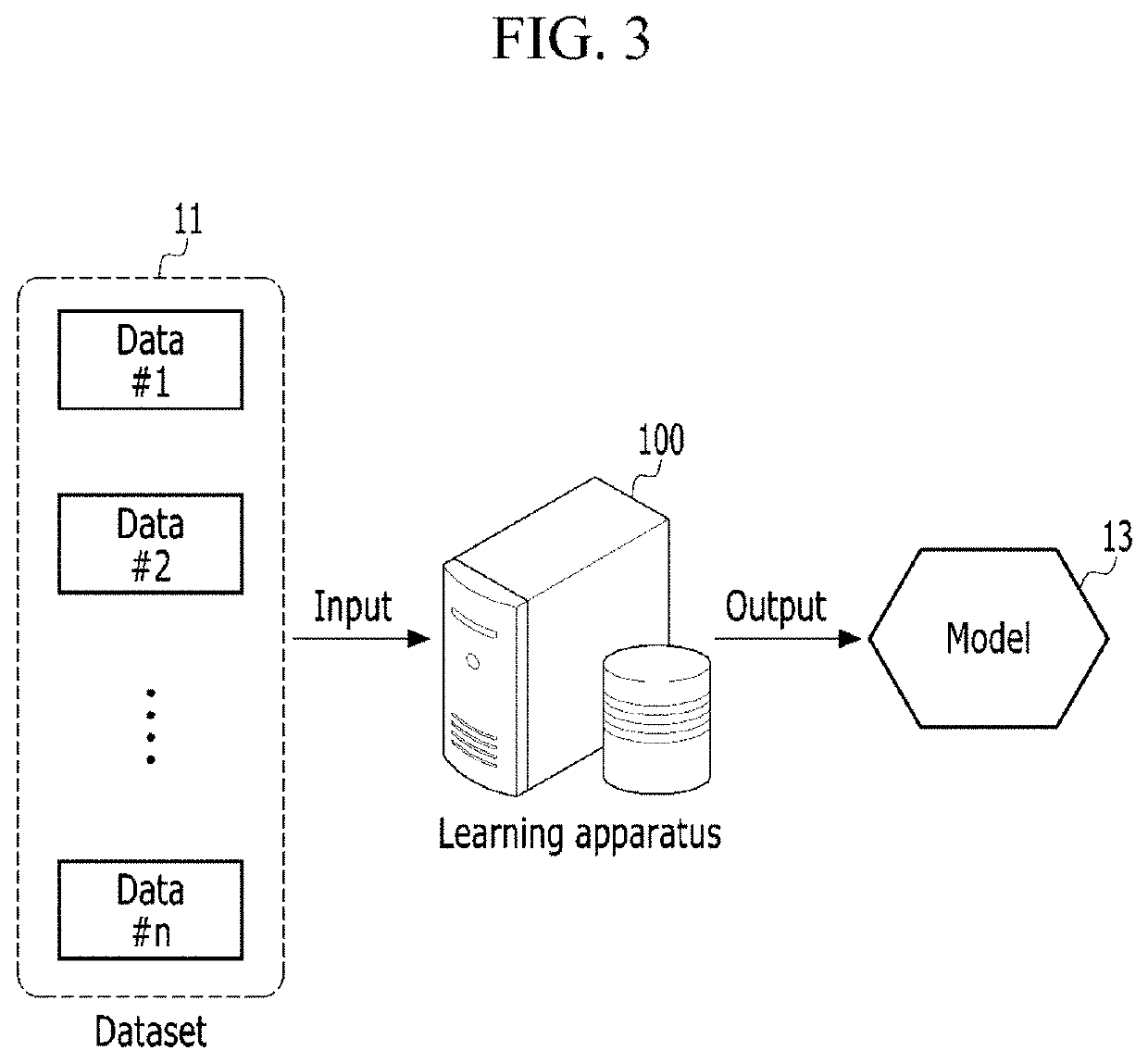Method and apparatus for machine learning
a machine learning and machine learning technology, applied in the field of machine learning methods and apparatuses, can solve the problems of large complex mathematical operations, and difficulty in generating large-scale training datasets, and achieve the effect of reducing human cost and time cos
- Summary
- Abstract
- Description
- Claims
- Application Information
AI Technical Summary
Benefits of technology
Problems solved by technology
Method used
Image
Examples
first embodiment
[0099]FIG. 9 is an exemplary flowchart of a method for constructing a miss-prediction probability calculation model according to the present disclosure.
[0100]As shown in FIG. 9, the first embodiment begins with step S110 of selecting a data sample group corresponding to some of the training dataset.
[0101]In steps S120 and S130, the learning apparatus 100 acquires label information on the selected data sample group, and trains the target model using the label information.
[0102]In step S140, the learning apparatus 100 evaluates the target model by again using the selected data sample group. For example, the learning apparatus 100 may obtain a prediction result by inputting the first data sample into the target model, and evaluate the target model by comparing the prediction result with label information of the first data sample.
[0103]In step S150, the learning apparatus 100 constructs the miss-prediction probability calculation model by using the evaluation result. More specifically, ...
second embodiment
[0108]FIG. 11 is an exemplary flowchart of a method for constructing a miss-prediction probability calculation model according to the present disclosure.
[0109]As shown in FIG. 11, an overall process of the second embodiment is similar to that of the first embodiment shown in FIG. 9. However, there is a difference between the first and second embodiments that, in the second embodiment, the selected data sample group is divided into a first sample group and a second sample group, and then the target model is learned with the first sample group, and the target model is evaluated with the second sample group (see S230 to S250).
[0110]That is, in the above-described first embodiment, the evaluation is performed by using the learned sample group, but the second embodiment differs from the first embodiment in that the target model is more accurately evaluated by distinguishing the learning and evaluation sample groups. According to some embodiments, the learning apparatus 100 may repeatedly...
PUM
 Login to View More
Login to View More Abstract
Description
Claims
Application Information
 Login to View More
Login to View More - R&D
- Intellectual Property
- Life Sciences
- Materials
- Tech Scout
- Unparalleled Data Quality
- Higher Quality Content
- 60% Fewer Hallucinations
Browse by: Latest US Patents, China's latest patents, Technical Efficacy Thesaurus, Application Domain, Technology Topic, Popular Technical Reports.
© 2025 PatSnap. All rights reserved.Legal|Privacy policy|Modern Slavery Act Transparency Statement|Sitemap|About US| Contact US: help@patsnap.com



